Swiss Ambassador visits CIMMYT-Harare
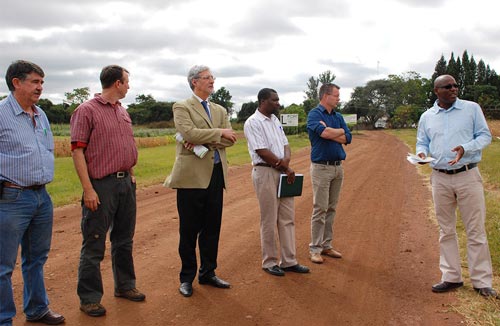
change with the Swiss Ambassador.
The Ambassador of Switzerland to Angola, Malawi, Zambia, and Zimbabwe, Luciano Lavizzari, accompanied by the Swiss Agency for Development and Cooperation (SDC) Food Security program officer for Zimbabwe Mkhululi Ngwenya, visited the CIMMYT Regional office for Southern Africa in Harare, Zimbabwe, on 23 April 2013. The CIMMYT-Harare staff provided a tour around the facilities and briefed them on CIMMYT’s work on food security geared towards finding solutions to challenges faced by farmers.
In the beginning of the visit, CIMMYT physiologist Jill Cairns discussed the issue of climate change. “As a result of climate change, the seasons are going to be much shorter,” explained Cairns, adding that in a region with the lowest maize yields globally, a lot more effort is required to deploy germplasm and farming systems adapted to respond to constraints in the region. Cairns discussed the work done by CIMMYT scientists in countering stresses such as low nitrogen, drought, and heat stress along the maize breeding pipeline from population development, pedigree breeding, to regional and on-farm trials in over 100 diverse locations. She also covered the phenotyping tools used in the research work and highlighted research gains in maize yields, many of which result from highly drought-tolerant maize lines and improved efficiencies of maize breeding pipeline in Eastern and Southern Africa.
John MacRobert, seed systems specialist, highlighted the importance of harmonizing seed systems in the region. “Some countries, like Zimbabwe, have very well developed seed sectors, while others are largely informal,” MacRobert said, stressing the negative consequences this may have on farmers. He then explained the importance of on-farm trials in incorporating farmer preferences such as grain texture in breeding work, using the example of SDC-funded New Seed Initiative for Maize in Southern Africa (NSIMA), a project whose acronym is fashioned after a popular maize staple dish in Zambia and Malawi known as nsima: “NSIMA targets a subset of smallholder farmers who consume the maize that they grow.” MacRobert also highlighted collaboration with other SDC projects whose seed systems encourage community-based seed companies targeting smallholder farmers.
Next on the agenda was conservation agriculture covered by agronomist Christian Thierfelder. “It is crucial to link improved varieties with the best management practices to ensure the sustainability of the cropping system,” stressed Thierfelder who then went on to demonstrate a range of sowing equipment from a stick to animal traction planters used in conservation agriculture.
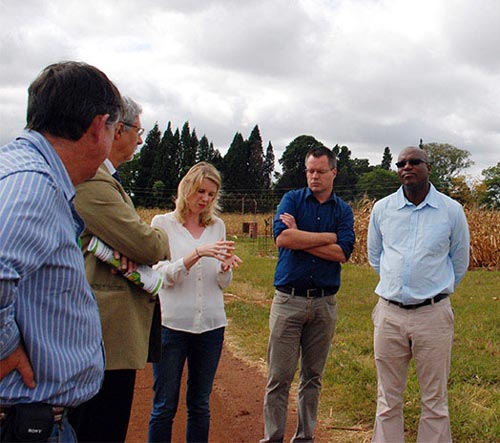
Socioeconomist Girma T. Kassie turned attention to the consequences of lack of funding for smallholder farmers. For example, lack of funding programs to help the smallholder farmers acquire equipment limits uptake of improved planting practices. “Research on the impact of improved technologies aimed at improving livelihoods of smallholder farmers can help identify the gaps in technology transfer,” he added. Afterwards, the visitors toured CIMMYT trials where they observed the discussed technologies in the field.
CIMMYT has had a long-standing relationship with Switzerland through SDC, which currently funds several CIMMYT projects geared towards improving food security of smallholder farmers in East and Southern Africa. The projects, focusing on post-harvest losses reduction, conservation agriculture, and improved seed systems, include the Effective Grain Storage Project (EGSP), Seeds and Markets Project (SAMP), Harmonized Seed Security Project (HaSSP), and NSIMA. In addition, the SDC funds the ‘SDC-Junior Professional Officer’ supporting agronomist Stephanie Cheesman at the Global Conservation Agriculture Program team. CIMMYT highly appreciates the continued support from the Swiss government through SDC.
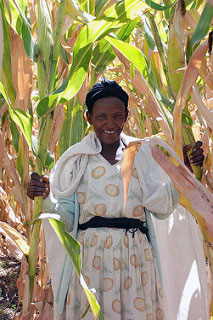 The Nutritious Maize for Ethiopia (NuME) aims to develop and promote quality protein maize (QPM) in the major maize growing areas of Ethiopia, including the highlands and the dry lands, to improve nutritional status of children. The project has a strong gender component, ensuring women’s full participation in all activities and equal share of benefits, which was discussed during a Gender Analysis and Strategy workshop at the
The Nutritious Maize for Ethiopia (NuME) aims to develop and promote quality protein maize (QPM) in the major maize growing areas of Ethiopia, including the highlands and the dry lands, to improve nutritional status of children. The project has a strong gender component, ensuring women’s full participation in all activities and equal share of benefits, which was discussed during a Gender Analysis and Strategy workshop at the 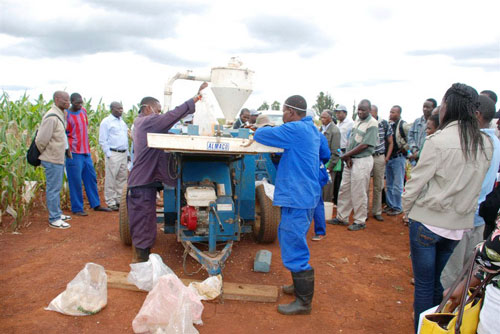 The field day was followed by a feedback session and a technical seminar on the maize lethal necrosis (MLN) disease that has emerged recently in East Africa. During the seminar presented by Magorokosho and MacRobert, principal director of the Department of Agriculture Research Services Danisile Hikwa expressed her appreciation to CIMMYT for its efforts to develop MLN resistant varieties.
The field day was followed by a feedback session and a technical seminar on the maize lethal necrosis (MLN) disease that has emerged recently in East Africa. During the seminar presented by Magorokosho and MacRobert, principal director of the Department of Agriculture Research Services Danisile Hikwa expressed her appreciation to CIMMYT for its efforts to develop MLN resistant varieties.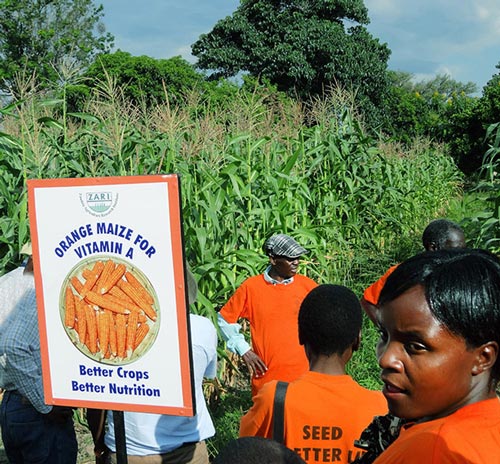 With over 50% of Zambian children under five vitamin A deficient, Zambia faces a major public health problem. This has resulted in several government intervention programs including vitamin A supplementation and sugar fortification, efforts which will soon be complemented by the release of three orange maize hybrids with higher levels of provitamin A carotenoids (compounds converted to vitamin A when consumed) developed by CIMMYT in collaboration with the Zambia Agriculture Research Institute (
With over 50% of Zambian children under five vitamin A deficient, Zambia faces a major public health problem. This has resulted in several government intervention programs including vitamin A supplementation and sugar fortification, efforts which will soon be complemented by the release of three orange maize hybrids with higher levels of provitamin A carotenoids (compounds converted to vitamin A when consumed) developed by CIMMYT in collaboration with the Zambia Agriculture Research Institute (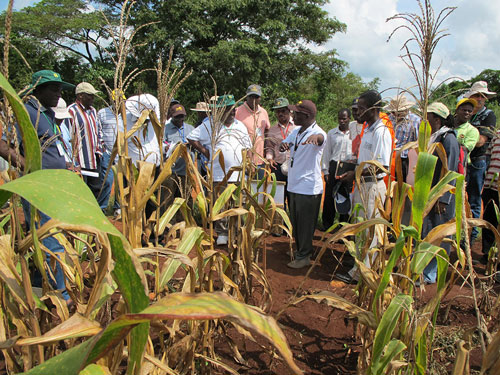 Over 200 researchers, policy makers, donors, seed companies, and NGO representatives from Africa and Australia gathered in Chimoio, Mozambique, during 17-23 March 2013 for the third
Over 200 researchers, policy makers, donors, seed companies, and NGO representatives from Africa and Australia gathered in Chimoio, Mozambique, during 17-23 March 2013 for the third 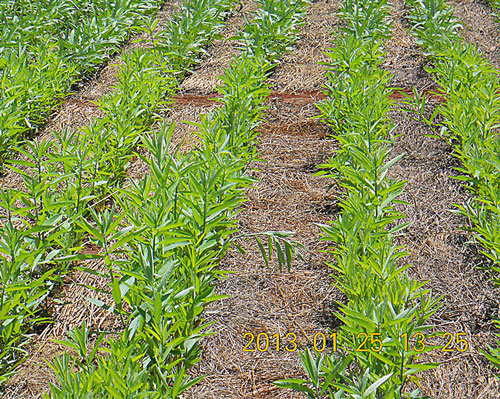 In 2012, three CG centers—the International Livestock Research Institute (
In 2012, three CG centers—the International Livestock Research Institute (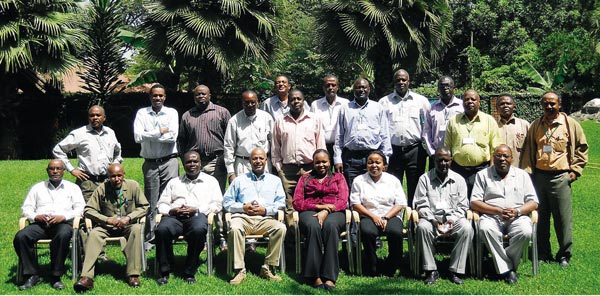
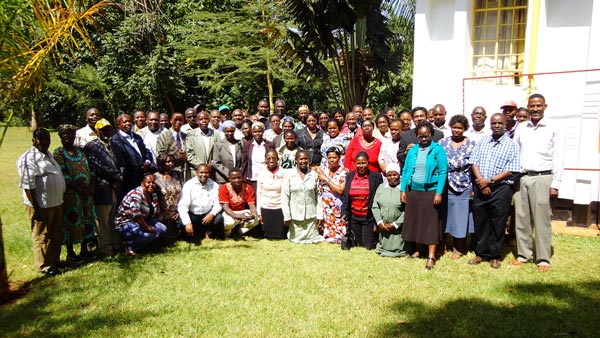
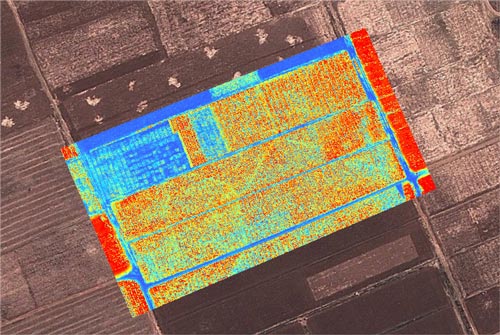 To free phenotyping of the varietal development bottleneck label, many new tools have been developed to enable an easier plant growth and development characterization and field variability. Until recently, these tools’ potential has been limited by the scale on which they can be used, but this is changing: a new affordable field-based phenotyping platform combining cutting edge aeronautics technology and image analysis was developed through collaboration between researchers from the
To free phenotyping of the varietal development bottleneck label, many new tools have been developed to enable an easier plant growth and development characterization and field variability. Until recently, these tools’ potential has been limited by the scale on which they can be used, but this is changing: a new affordable field-based phenotyping platform combining cutting edge aeronautics technology and image analysis was developed through collaboration between researchers from the 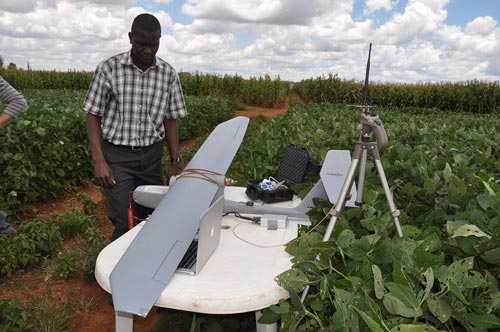 The new platform uses ‘Sky Walker,’ an unmanned aerial vehicle which can fly at over 600-meter with an average speed of 45 km/h. The vehicle has thermal and spectral cameras mounted under each wing, and its flight path and image capturing are controlled via a laptop using Google Earth images. Jill Cairns and Mainassara Zaman-Allah tested the platform at CIMMYT-Harare along with José Luis Araus (University of Barcelona), Antón Fernández (AirElectronics president), and Alberto Hornero (Sustainable Agricultural Institute of the High Research Council) to establish the optimal flight path (distance between plane passes and height) for plot level measurements. Field experiments were phenotyped for spectral reflectance and canopy temperature within minutes; these will be compared to results from the GreenSeeker.
The new platform uses ‘Sky Walker,’ an unmanned aerial vehicle which can fly at over 600-meter with an average speed of 45 km/h. The vehicle has thermal and spectral cameras mounted under each wing, and its flight path and image capturing are controlled via a laptop using Google Earth images. Jill Cairns and Mainassara Zaman-Allah tested the platform at CIMMYT-Harare along with José Luis Araus (University of Barcelona), Antón Fernández (AirElectronics president), and Alberto Hornero (Sustainable Agricultural Institute of the High Research Council) to establish the optimal flight path (distance between plane passes and height) for plot level measurements. Field experiments were phenotyped for spectral reflectance and canopy temperature within minutes; these will be compared to results from the GreenSeeker.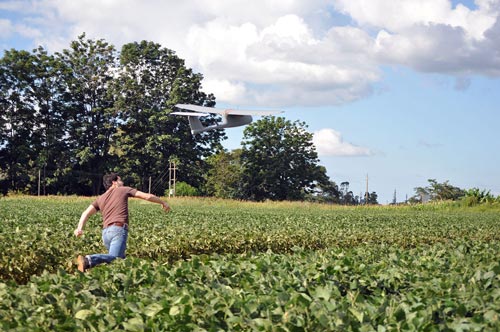
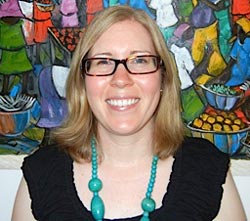 Nicole Mason is an assistant professor of International Development at the Department of Agricultural, Food, and Resource Economics at Michigan State University.
Nicole Mason is an assistant professor of International Development at the Department of Agricultural, Food, and Resource Economics at Michigan State University. A recently-emerged disease in Eastern Africa, maize lethal necrosis (
A recently-emerged disease in Eastern Africa, maize lethal necrosis (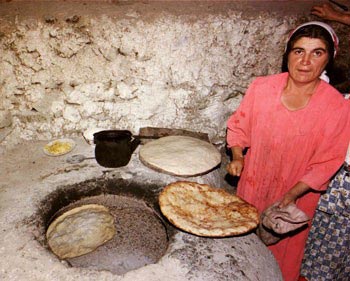 A February 2013 report from
A February 2013 report from 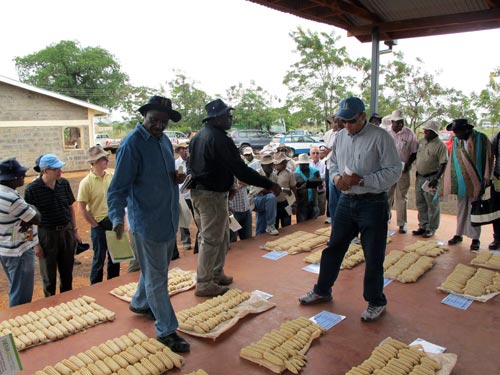 During 4-8 February 2013, stakeholders of the Water Efficient Maize for Africa (
During 4-8 February 2013, stakeholders of the Water Efficient Maize for Africa (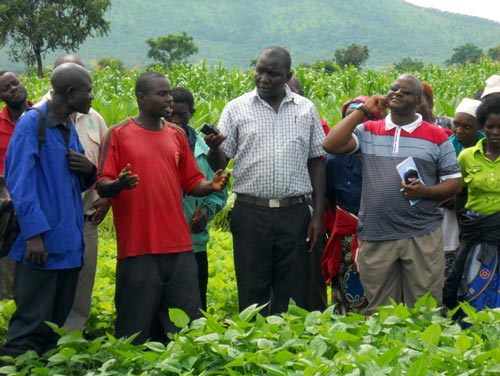 In rural areas surrounding Chipata in eastern Zambia, tobacco, cotton, and maize seem to dominate the agricultural landscape. If you look closer, you will also see smaller fields with groundnuts, cowpeas, soybeans, and sunflowers. But there is yet another dimension of diversity: the different growth stages and (inadequate) fertilization levels of the crops have resulted in a patchwork of yellow to deep green fields of many sizes and shapes, with various degrees of weed infestation. In this smallholder farming area with an average annual rainfall of more than 1,000 mm, it is neither easy to stay ahead of the weeds on all fields, nor to buy enough fertilizer for a healthy crop.
In rural areas surrounding Chipata in eastern Zambia, tobacco, cotton, and maize seem to dominate the agricultural landscape. If you look closer, you will also see smaller fields with groundnuts, cowpeas, soybeans, and sunflowers. But there is yet another dimension of diversity: the different growth stages and (inadequate) fertilization levels of the crops have resulted in a patchwork of yellow to deep green fields of many sizes and shapes, with various degrees of weed infestation. In this smallholder farming area with an average annual rainfall of more than 1,000 mm, it is neither easy to stay ahead of the weeds on all fields, nor to buy enough fertilizer for a healthy crop.